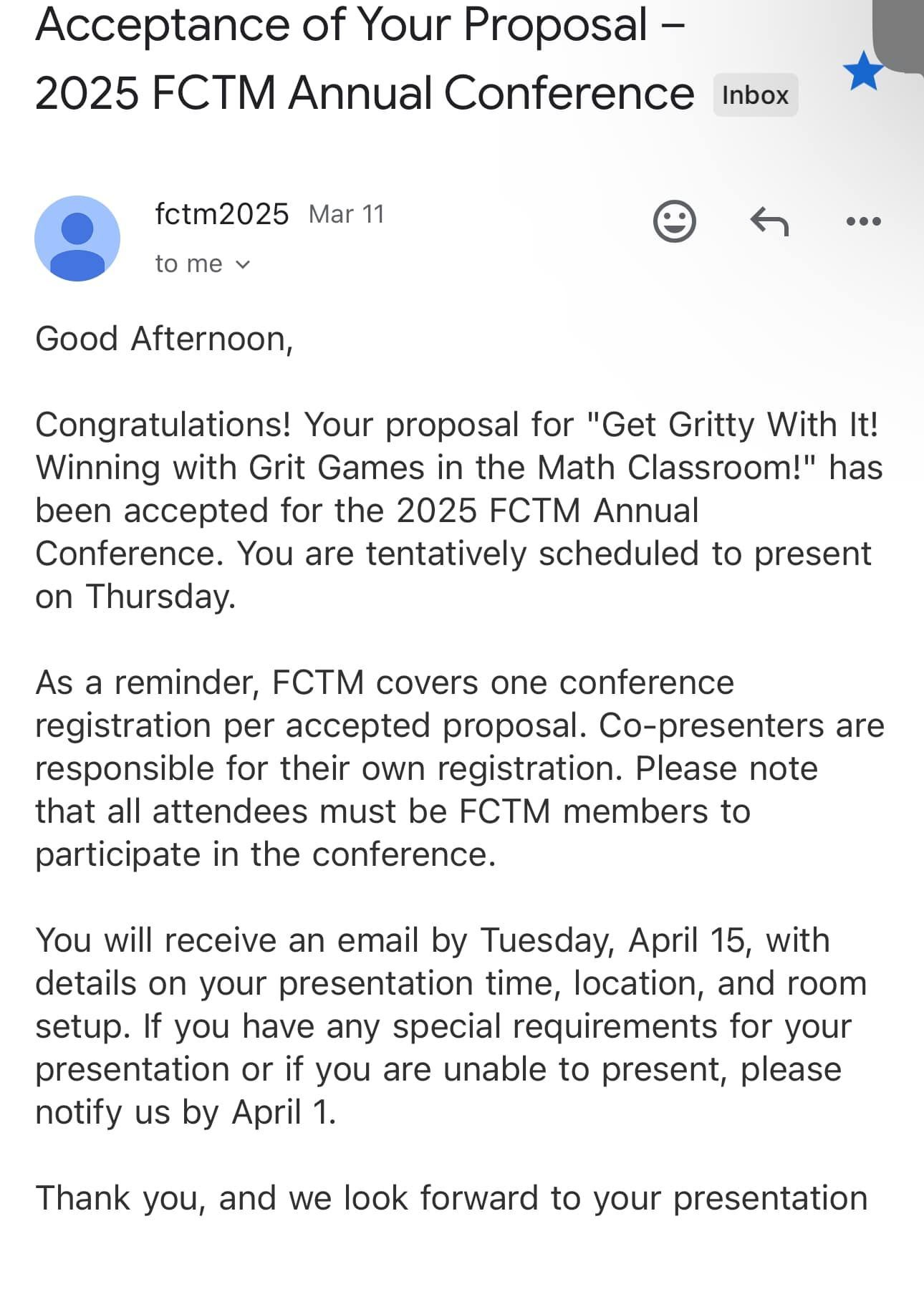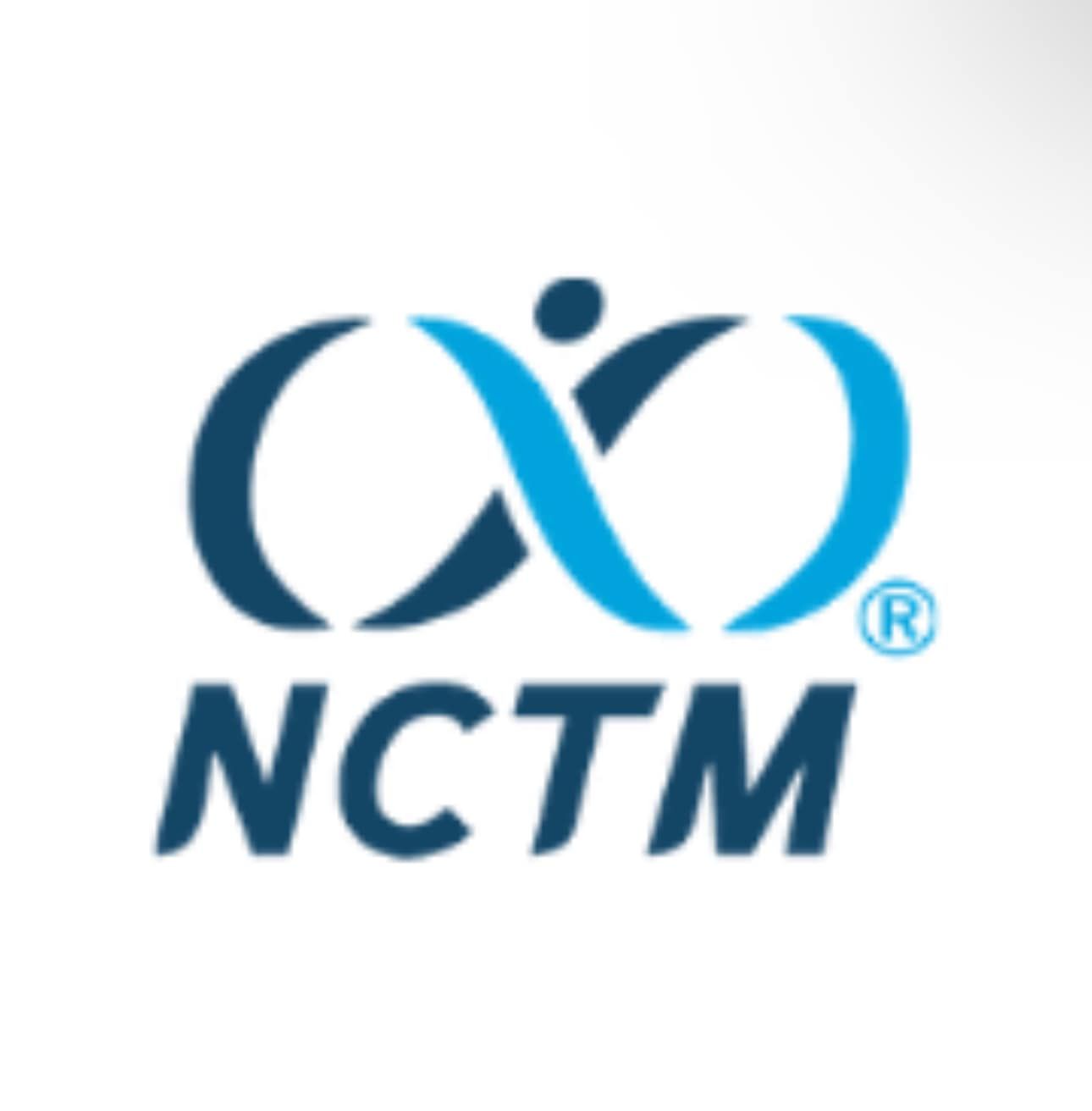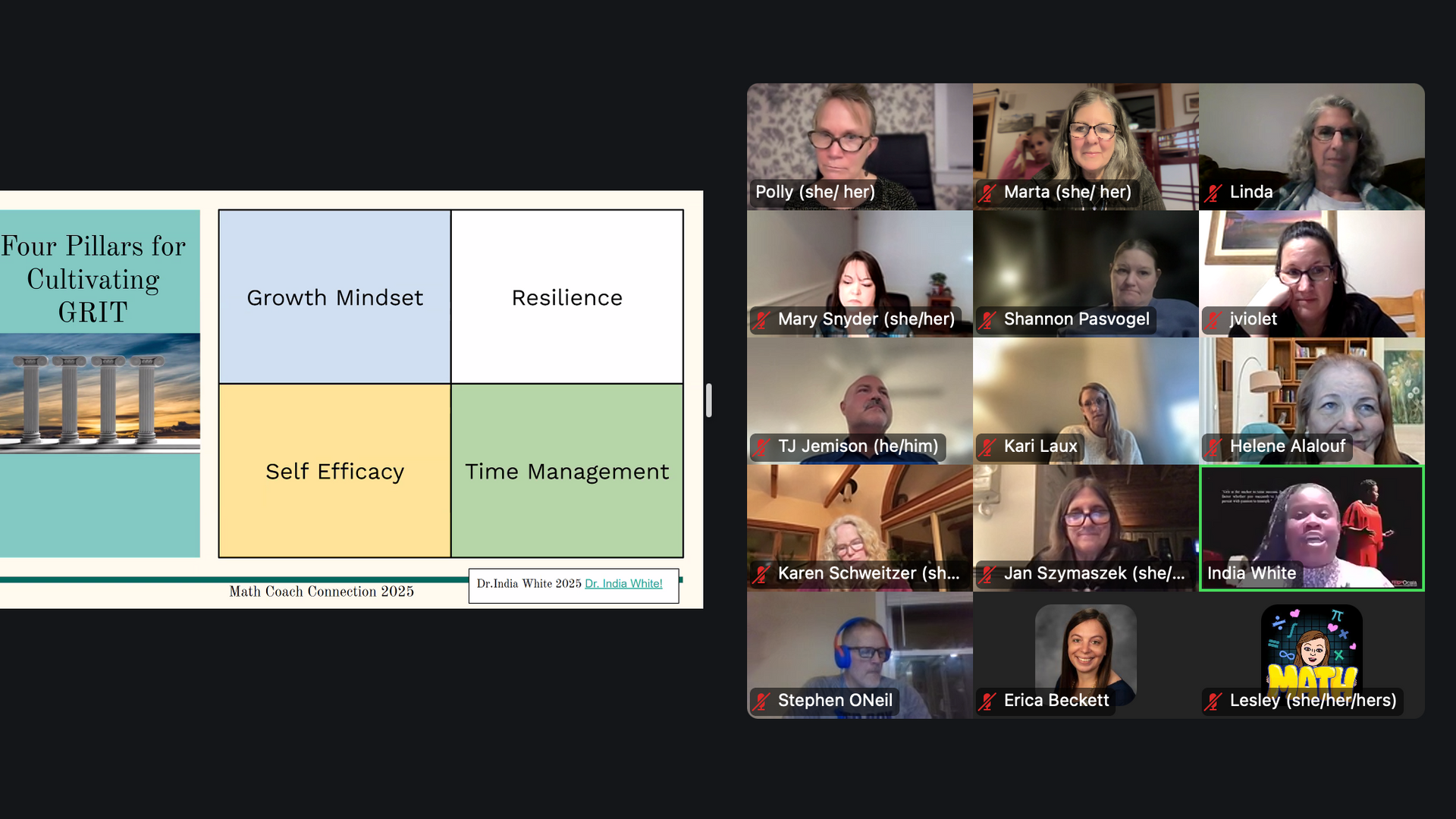The Power of GRIT during Productive Struggle in a Math Classroom
The Power of Grit during Productive Struggle in a Math Classroom!

The POWER of GRIT during Productive Struggle Moments in a Math Classroom
Grit is defined by Dr. Angela Duckworth as, “passion and perseverance for long-term goals.” Grit is seen as general concept of being able to persist through hard moments in life that present mental, emotional or physical challenges. In the math classroom, students lack engagement and academic achievement due to various factors, i.e. testing anxiety, feeling like they don’t belong in math, or fear of the topic itself. In order to get students to overcome these hurdles when they face new content.
The POWER of GRIT in Productive Struggle Moments in a Math Classroom
Grit is defined by Dr. Angela Duckworth as, “passion and perseverance for long-term goals.” Grit is seen as general concept of being able to persist through hard moments in life that present mental, emotional or physical challenges. In the math classroom, students lack engagement and academic achievement due to various factors, i.e. testing anxiety, feeling like they don’t belong in math, or fear of the topic itself. In order to get students to overcome these hurdles when they face new content.
Get Students Motivated to Stay Engaged
Sometimes, students lack engagement due to various factor including test anxiety, personal stress, distractions, and lack of confidence. Sometimes, it is assumed that as students embrace their part in the lesson, it can help solve the problem of a lack of engagement. However, sometimes students need help with taking the first step towards being engaged, and this happens with motivation. Intrinsic motivation and extrinsic motivation have been proven to be catalysts towards academic achievement towards all students. As teachers implement activities and instructional practices that can motivate students to learn, they will begin to help students make connections.
How do I Motivate My Students?
The big question to ask each leader is, “How then do you motivate a learner?” Well, there are several strategies to motivate learners including culturally responsive teaching, empowering students to lead parts of the lesson, and even providing various activities where students can be motivated by their peers throughout instruction. In Dr. Pam Seda’s Book titled, “Choosing to See”, the ICU Care framework highlights various tips for teachers to provide equitable instruction and engage learners. In this framework, Dr. Seda highlights how teachers can show that they care via expecting more and using culturally responsive curricula to drive instruction. Further, teachers can motivate students through providing rewards for tangible and non-tangible awards for their achievements. These tools will help increase the grit levels of scholars and keep them motivated to remain engaged during instruction.
Resist the Urge to Give Up!
A favorite quote I loved to use as an educational leader and motivational speaker was, “You must fight the urge to be average.” In education, this quote is key for helping students get out of their rut and choose to go beyond their comfort zone. This can be achieved as teachers have students practice a few strategies towards success including 1) goal setting, 2) embracing rigor during productive struggle, and 3) keeping a growth mindset. As teachers establish these practices with their learners, they must also be aware that sometimes, first-generation scholars, and disadvantaged students do not always have a role model to demonstrate how to successfully achieve a goal. Hence, teachers must be willing to go the extra mile and serve as a thought leader and mentor for students as they grapple with these new concepts and exciting goals before them.
Internally Reflect on the Steps in the Math
As success continues to unfold in the lives of learners, teachers will begin to track their results via assessments, formal and informal assessments and through collective discussions with their students. This is when teachers should intentionally schedule time to reflect and document the progress of their students via a journal, and in continuous discussion with administrators, parents and community stakeholders. Teachers will begin to gather enough information to tell the full story of their student and how through these various practices, students were able to succeed during productive struggle and achieve results they once thought were impossible!
Story Time!
I can recall a student who could not pass the state standardized assessment. He was an African- American student that unfortunately fit the stereotypes. He was a senior and was not prepared to graduate. After many motivational talks with this student, and helping him map out a plan for success, we began to track his progress. He would fail a test or two and then he would reset, ultimately achieving success. He would report back with results of how he passed various courses, and then began to talk about how he passed various standardized tests. This was a process that took months to gather data on, but at the end of the year, he graduated with his senior class, PASSED his standardized tests, and enrolled into a 4-year university with scholarships! As a first-generation scholar, he beat the odds and went on to achieve great things. This success story took much work from all of the teachers who worked with this student, and a growth mindset, grit and motivation from this successful scholar.
Teach Until You Achieve Success!
As teachers choose to put forward the effort, optimistic mindset and leadership example for their students to succeed, they will begin to see the desired success they’ve longed for. Students’ grades will begin to increase from failure to above average. Students will become “grittier”. As students continue to succeed and embrace productive struggle during their metacognitive experience, they will begin to achieve. As a result, schools will begin to report more disadvantaged students breaking the cycle and paying it forward as academic scholars and successful leaders in society. However, teachers must CHOOSE to teach until they see what they know is success for each student.
Conclusion
In order to prepare students for ultimate success in the classroom, students must be equipped with the tools needed to succeed. Hence, students need to become comfortable with the idea of productive struggle and develop the necessary tools needed to succeed during tough lessons in class. These tools include motivation, grit, and a growth mindset, which all enhance the socio-emotional experience of each leaner and builds their self-confidence. As teachers assume their roles in effectively delivering instruction with these tools and embracing a leadership role as a role model/mentor for their students, the success students will achieve will be inevitable. May each teacher and leader have the best success while implementing these tools while helping scholars become successful during productive struggle!









Contact Us
We will get back to you as soon as possible.
Please try again later.
India White, All Rights Reserved. Powered By Automation Links
Terms of Us | Privacy Policy | About
